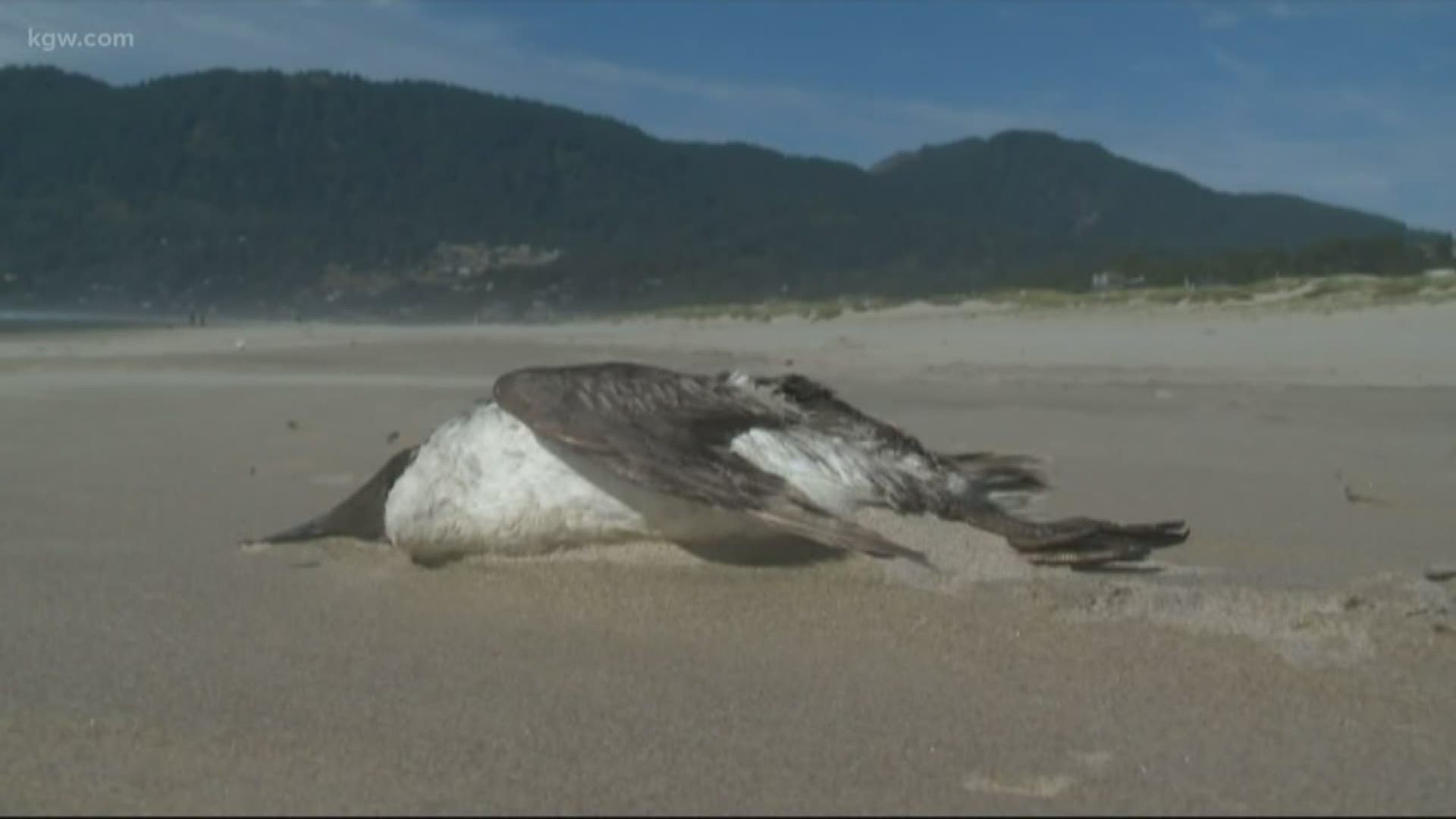PORTLAND, Ore. — Researchers have linked a massive die-off of seabirds along the West Coast a few years back to an ocean phenomenon called "the blob."
The die-off happened in 2015 and 2016. Hundreds of seabirds washed ashore along the Oregon and Southwest Washington coast. They were either already dead or dying.
For years, many in the science community thought the birds died as the result of disease or toxins in the ocean water.
But researchers recently linked the die-off to that massive ocean warm blob.
It was about 300 feet deep and 1,000 miles long, stretching from California up past Washington. The water in this marine heatwave was roughly five degrees warmer than normal.
Researchers estimate close to a million common murres died of starvation in 2015 and 2016 as a result of the blob.
The warm water impacted the ocean food chain from the bottom up. The fish the birds needed to eat simply were not there.
"This was something that sort of exceeded all past events and continued to go far beyond what anybody every expected," said U.S. Geological Survey wildlife biologist John Piatt.
Piatt believes the warm blob also likely impacted Chinook salmon populations by killing off the food the young salmon would need to eat and survive.
Following 2016, the warm blob diminished. The murre population has nearly recovered since that time.
But the concern is far from over.
There is a new warm blob forming right now offshore. It's not nearly as big as the one a few years ago. Still, you can bet, researchers will watching it closely.

